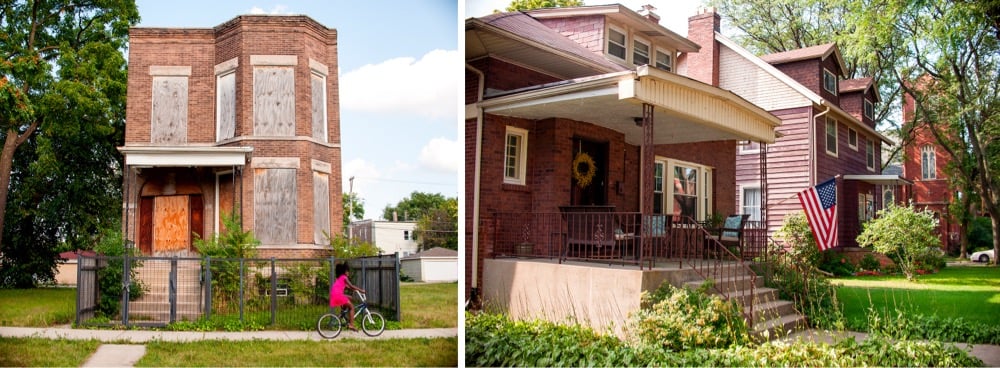The Folded Map Project

With regard to the Chicago’s street numbering system, Madison Street is the boundary between the North and South Sides of Chicago. Because of discriminatory housing policies and practices, especially during the Great Migration, Chicago is one of the most segregated cities in America. Generally speaking, a predominantly white North Side has had better access to resources and higher home values while a largely Black South Side has had lower home values and less access to resources.
Artist Tonika Johnson’s Folded Map Project explores the differences and similarities across this boundary by comparing an addresses on the North Side with the corresponding addresses on the South Side. She does this through paired photos of the houses and the residents living at each twinned address, and video interviews with those “map twin” residents, as well as a movie, an installation, workshops, and even a stage play. The image at the top of the post is of one of the address pairs (6329 S. Paulina and 6330 N. Paulina).
Colossal recently posted an interview with Johnson about the project:
The ultimate point that I was trying to get across was that Chicago’s history of segregation is still with all of us today. I wanted to prove this point for people who might not make that connection [between] the disparity that exists and the history behind it. I wanted the project to be an entree into expanding people’s minds of Chicago’s history of segregation through thinking about their own lived experience. I really appreciated being able to do that through art, through photos and portraits and video because I wasn’t blaming people who live on these different sides. I was offering them insight into the larger question of, “did you really choose this? Does our segregation reflect how we want to interact? And if it doesn’t, then you have to question why is it this way?”
There is this narrative that people think [Chicagoans] don’t interact. But we do, a lot, especially through art. That’s how we know the city is segregated. (laughing) We know that we’re disrupting this segregation when we come together. And that’s why I think art is such a beautiful common denominator.





Stay Connected